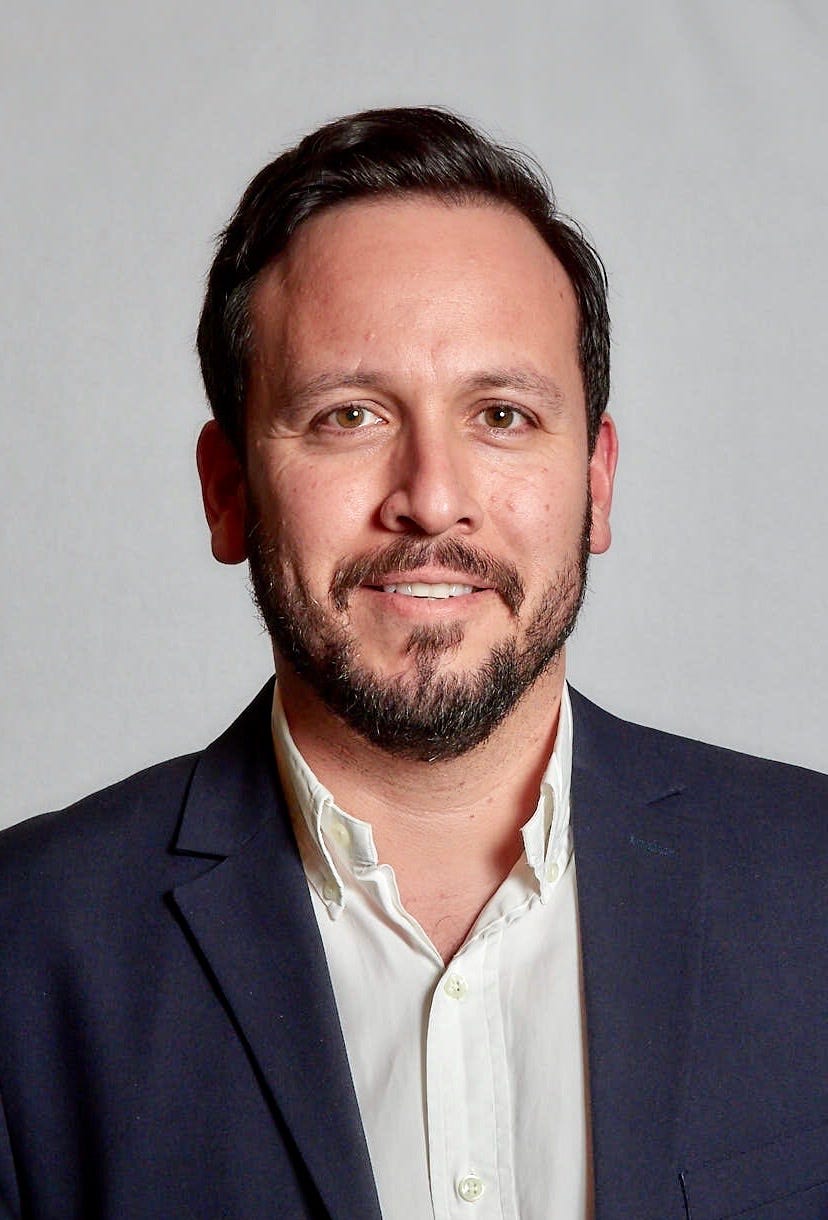Frontiers Friday #147. The Debate on Grief Work and Beyond Outcome Measurement ⭕️
A guest contribution from specialist grief counsellor at Grief Australia, Miguel Lopez.
Today, we take our monthly break from the usual, as we have our third guest contribution to Frontiers of Psychotherapist Development (FPD), Miguel Lopez.
(If you have missed the contribution by Finnish social psychologist, Heidi Nygård-Michelsson on creating a culture of learning in an organisation, or US counsellor, Jordan Harris on gamification of deliberate practice, go to FF137 and FF141 respectively.)
After you’ve read his essay, please leave a comment below for Miguel. Send your love to him.
Over to Miguel!
The Debate on Grief
…We are conflicted about what to do with grief and how to talk about it, much less how to measure therapy progress.
A few years ago, during a time when we were starting to implement Feedback Informed Treatment (FIT)1 in Grief Australia, I attended an international grief and bereavement conference. One of the key speakers related his experience with other experts in grief and bereavement around the globe; the task was to reach an agreement about the inclusion criteria and the implementation of the new diagnosis of Prolonged Grief Disorder in the DSM V.
I almost forgot the main topic of his presentation and just focused on his anecdote and reminder that implementing something new is never easy. He expressed that because of the hotly contested debate about grief, he had to reduce the volume of the Zoom calls he was having around this discussion. I was thinking to myself, ‘If the most renowned experts struggle to reach an agreement on implementing something new in the field of grief, what will become of the rest of us when we just try to measure outcomes?’
[Editor’s note: For more on the debate on prolonged grief disorder, watch this video from Psychotherapy Networker.]
Grief and bereavement is a multifaceted process that affects the way we think, feel, behave and relate to others. It can challenge our beliefs, and it is a culturally sensitive process. Grief is not a mental health condition, but it can become one (As I mentioned previously, this is hotly debated).
At the ground level, grief seems to be the neglected cousin, compared to other mental health conditions. However, grief and loss is often there, and when it shows up, we are conflicted about what to do with grief and how to talk about it, much less how to measure therapy progress.
What type of challenges do we, as frontline practitioners, encounter when we try to capture outcomes in a field that tends to be hard to talk about?
Hear are my observations.
The Difficult Road
Grief and bereavement therapy is a relatively new field, despite being present, to some extent, in many other mental health presentations.
Like most specialisations, this niche within mental health has its own pet theories and models.
Implementing any type of ongoing routine outcome measures (ROM) in grief therapy is a massive shift and regarded as ‘sacrilege’ to use it for some practitioners.
“We can’t measure it.”
“This is all too clinical.”
“This is client is a special case.”
Those doubts are extremely important to address with diligence in any implementation process. When these doubts were addressed, grief practitioners became more open to incorporating the measures.
Specifically, this is not about reducing stories to numbers, or the “quantification” of progress. This is about being able to monitor progress and being able to adjust our approach to best serve the individual.
Becoming ‘The FIT Guy’
One of my challenges was becoming known by my colleagues as “The FIT guy.”
I felt inadequate.
“Tell me what to do."
I didn’t have all the answers.
And at times, despite our best efforts, frustrations run high when things didn’t turn out as what we hoped for.
Adding to the complication, “The FIT Guy” is not necessarily also the clinical supervisor. It is important to note that people’s professional relationships with supervisors have existed since before the implementation process. Often, supervisors are less well-versed in outcomes literature and are, therefore, unable to support or facilitate the process of FIT for their supervisees. This can lead to conflicting opinions or points of view being given regarding cases.
Nonetheless, I noticed that our team of practitioners cared deeply about trying to do their best in helping their clients. The session-by-session measures started to bring to light how things are actually progressing.
Over time, practitioners began to see the therapeutic potential in the use of measures, adding an important layer to their clinical perspective.
Sustaining the Efforts: Less Intensity, More Consistency
The implementation process isn’t over once outcome measures are accepted and incorporated by an individual practitioner. After all, the use of measurement scales isn’t exactly rocket science.
The challenge is that regular follow-up is needed to ensure that the measures are used effectively and are of benefit to the bereaved person. Each practitioners progressed at different rates, and the pacing and types of professional learning needs to reflect this.
In other words, stand-alone or sporadic trainings were necessary, but insufficient.
One of the approaches that I adopted to promote the use of FIT and to maintain engagement in learning was to establish weekly “FIT-ness sessions.” These were optional, informal, weekly (virtual) sessions to discuss cases that colleagues were working on through a FIT lens.
Colleagues had the option to submit a graph to me ahead of time for discussion or to simply join the discussion as we analysed the case. This strategy kept the conversation about outcome measures going and helped to build a shared language for interpreting graphs and trajectories.

Despite the challenges, the benefits of using outcome measures became apparent. As an organisation, we now have thousands of sessions measured, and it is clear that grief therapy can, in fact, be tracked and measured using these tools just like any other condition that leads to distress.
As therapists, we are often plagued with doubts about the work that we do. Being able to see clearly see that what we do makes a difference in the lives of bereaved individuals has made a significant impact. In turn, for those who are not “on-track” with their progress, we now have a system to address this and make the necessary adjustments.
As we grow as a team, have a system to track our progress, helps us to identify each of our growth edges and where to channel our professional development efforts.
We cannot fix grief, but we can help people to integrate grief into their lives.
About Miguel Lopez
I originally trained as a clinical psychologist in Chile. Since moving to Australia ten years ago, I have worked as a Specialist Grief Counsellor at Grief Australia.
My work is underpinned by evidence-based practice and includes working with children, adolescents and adults with a range of different needs, losses and backgrounds. In addition, I have extensive experience running support groups with a particular interest in supporting bereaved men. I am trained in Prolonged Grief Disorder protocols (CGT) and have a keen interest in bereavement and mental health co-morbidities.
As part of my work, I provide grief-specific clinical supervision and secondary consultation to psychologists, social workers, and counsellors across Australia. In my role as a clinical supervisor, I provide empirically based, clinical supervision with a bereavement focus. I have a particular focus on Routine Outcome Monitoring (ROM) to support practitioners to enhance their performance in relation to specific client outcomes. One of the main areas of my work is enhancing the quality of the therapeutic alliance to improve the therapeutic process in grief and loss presentations.
My Reflections
There are some similarities to Miguel’s and Heidi’s stories, even though both are in very different clinical contexts.
There is one point I want to underscore that Miguel raised, which is often undervalued: Make the graphs visible.
Make the progress graphs visible to you and your clients. Discuss it.
Make the progress graphs visible to you and your clinical supervisor. Discuss it.
Related: Listen to Frontiers Podcast Episode: The Dyson Vacuum Cleaner and Making Progress Visible
This is one of the vital ways we can not only zoom-out and take perspective of where the client is at, and where they have been, but also bring the voice of the client into the backdoor conversations in supervision.
Here’s one other suggestion on how we can implement the use of measures into our clinical practice:
Develop a clinical decision pathway.
A clinical decision pathway that is based on client-rated (not therapist-rated) level of progress the person is making, or the lack thereof, can be advantageous. This is not meant to make things rigid, formulaic or hyper-standardised, but rather to serve as guides in our decision making.
This should at the very least, give you pause, as it augments your clinical decision making process.
The key is that a clinical decision pathway needs to be designed beforehand, not on-the-fly.
Why? We are prone to cognitive biases in the moment.
Based on what we know from psychotherapy outcomes literature, as well as my cumulative client outcomes data since 2004, here’s an example on a clinical decision pathway used in the course, Reigniting Clinical Supervision (RCS).
A final note. Measures must match the mission of each of our clients, and not just for bureaucratic use. (For more on the flip side of measurement, see Tyranny of Metrics).
Big thanks, Miguel Lopez for sharing your observations!
From the back catalogue of Frontiers Fridays on Grief:
YOUR TURN
What is your encounter with grief work? What are some of your challenges?
Warm Welcome to New Folks on Frontiers of Psychotherapist Development (FPD)
If you are new here, I just want to say a big hello to you and would love to hear from you. Tell me a bit about you and where you are from. Drop me an email info@darylchow.com
Click here to see more resources about Frontiers of Psychotherapist Development and Frontiers Friday.
Daryl Chow Ph.D. is the author of The First Kiss, co-author of Better Results, and The Write to Recovery, Creating Impact, and the new book The Field Guide to Better Results .
If you are new the the ideas of Feedback Informed Treatment, FIT is a pantheoretical approach for evaluating and improving the quality and effectiveness of behavioral health services. It involves routinely and formally soliciting feedback from consumers regarding the therapeutic alliance and outcome of care and using the resulting information to inform and tailor service delivery. For more, read this article: Beyond Measures.









